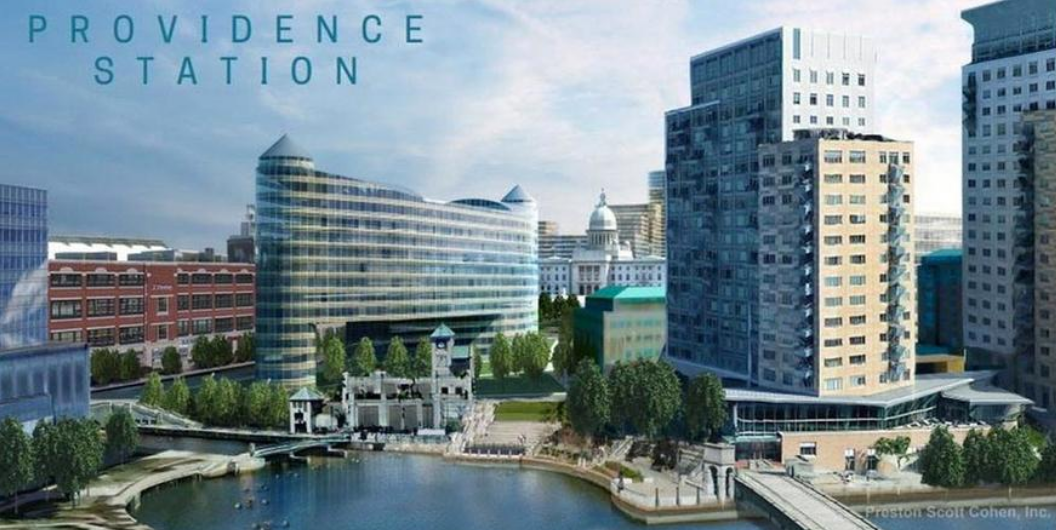
David Brussat
Outside Amazon’s Box?
Now that Amazon has collected proposals from 238 American (that is, North American) cities, here is the pitch that Providence should have made.
Amazon wants to build a second headquarters, presumably in some part of the country to balance its megapresence in Seattle, where it was founded. So, predictably, cities lined up to bring Amazon home. Rhode Island has submitted a bid. Commenters are saying Rhode Island is bound to fail, and with the recent release of its bid, they are certainly - and hopefully - correct.
But Rhode Island could have won if it had understood the value of its chief allure, and structured its proposal to take advantage of that allure and the difficulty other cities would certainly have in matching it.
The website Strong Towns has an essay called “What Can I Do To Make You Love Me?” by Charles Marohn, linked from Greater City Providence. Marohn, taking the now conventional view that the usual subsidy sweepstakes are bad for cities, writes:
What should be astounding is how desperate our cities are. How weak and fragile they appear, yet how normal that seems to everyone. It’s hard to blame America’s cities for lining up to compete for Amazon’s love and affection; they desperately need it.
Marohn starts out by emphasizing his daughters’ intelligence as the allure they bring, as young girls, to the competition for good marriage partners. This makes sense. If he were to emphasize their beauty he would run into a buzz saw of criticism. But Providence is not a young girl, it is an old city, and it should have structured its pitch with that fact, and its allure, firmly in mind.
Look at the photograph of Seattle, which shows what Amazon workers see when they step out the front door of its headquarters. It reflects certain urbanistic merits such as light rail but as a place it sucks. Sterile, glassy, uncongenial, uncomfortable. Not Providence. Providence and almost no other city of medium or larger size can offer a like degree of beauty.
Charleston, SC, is perhaps its closest rival, and it hasn’t the same sort of major vintage downtown that Providence has. Most cities screwed themselves with urban renewal half a century ago. Not Providence. Boston comes as close as any large city to Providence but its remaining beautiful areas are, shall we say, taken. Don’t look for available space on Beacon Hill or in Back Bay. And Boston in recent years has botched its major innovation district.
But while Providence has considerable beauty it does not know how to protect it, grow it, or market it. It is good at preserving lovely old buildings but not at protecting their settings. Its current development projects don’t strengthen but weaken its brand of historical character. The city would have put itself in a far better spot for the Amazon HQ2 competition if it had announced a policy of designing new buildings so as to reinforce and indeed build upon that brand.
This is not, as some would claim, looking backward to the past. No, it is to use the past as a model for moving into the future, a model abandoned by almost every other city. Cities in America and around the world did this for centuries, and succeeded both aesthetically and in matters of utility. Almost all of those cities have now rejected that time-honored wisdom, leaving the way clear for Providence to steal a march on North America. Providence should have promoted itself as the leader in rediscovering and improving upon historic character. It did not.
It is not just the beauty thing to do but the smart thing to do. Sense and sensibility. Gov. Gina Raimondo should have pitched bold, challenging Amazon itself to think outside the box. Raimondo should have declared that Amazon would be welcome here only if it joins in strengthening the natural brand of the city and the state. She should have insisted that Amazon design its new headquarters in some form of new traditional architecture. But instead of playing hard to get outside the box, she played copycat with a pitch that suffocates Rhode Island’s advantages.
Either way, Providence and Rhode Island are sure to lose if Amazon makes its decision based on the conventional criteria, toking the conventional wisdom. And if it does, the Ocean State is better off losing. But the worst outcome would be to win with such a fatally misguided pitch as she did in fact make. Too sad!
For 30 years, David Brussat was on the editorial board of The Providence Journal, where he wrote unsigned editorials expressing the newspaper’s opinion on a wide range of topics, plus a weekly column of architecture criticism and commentary on cultural, design and economic development issues locally, nationally and globally. For a quarter of a century he was the only newspaper-based architecture critic in America championing new traditional work and denouncing modernist work. In 2009, he began writing a blog, Architecture Here and There. He was laid off when the Journal was sold in 2014, and his writing continues through his blog, which is now independent. In 2014 he also started a consultancy through which he writes and edits material for some of the architecture world’s most celebrated designers and theorists. In 2015, at the request of History Press, he wrote Lost Providence, which was published in 2017.
Brussat belongs to the Providence Preservation Society, the Rhode Island Historical Society, and the Institute of Classical Architecture & Art, where he is on the board of the New England chapter. He received an Arthur Ross Award from the ICAA in 2002, and he was recently named a Fellow of the Royal Society of the Arts. He was born in Chicago, grew up in the District of Columbia, and lives in Providence with his wife, Victoria, son Billy, and cat Gato.






